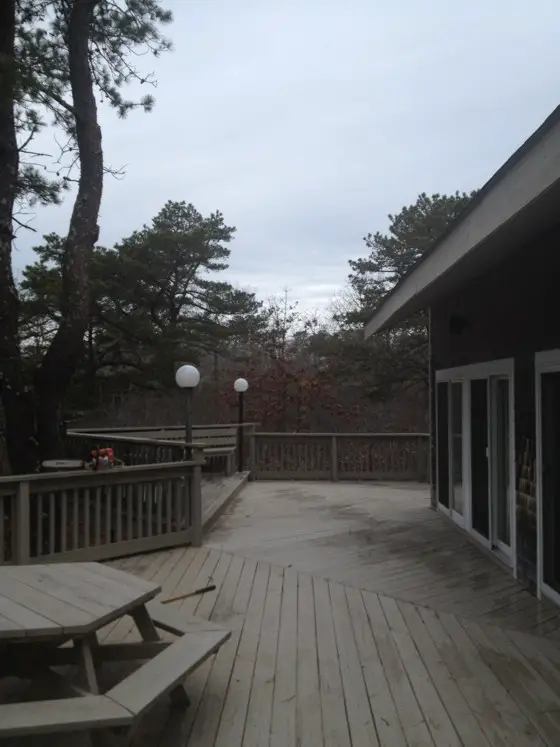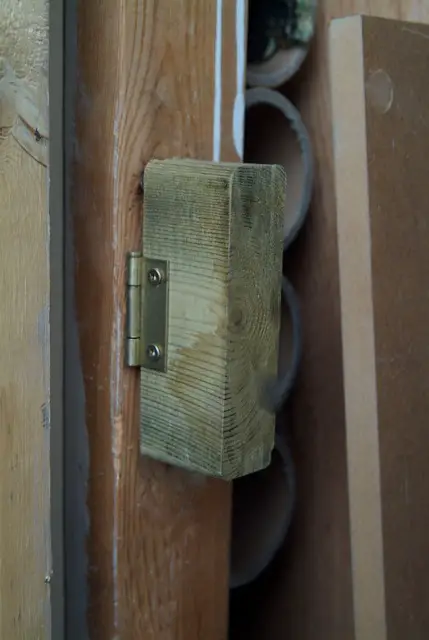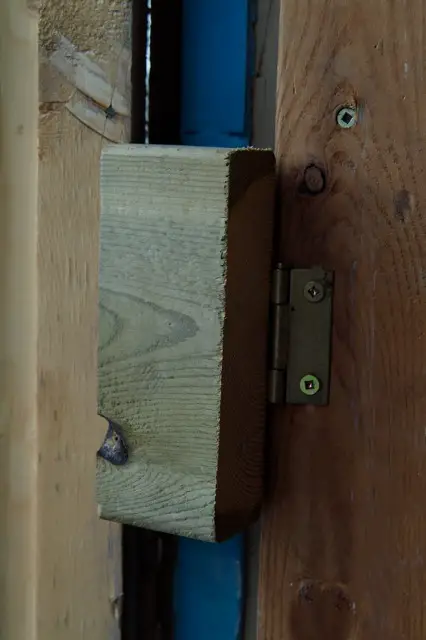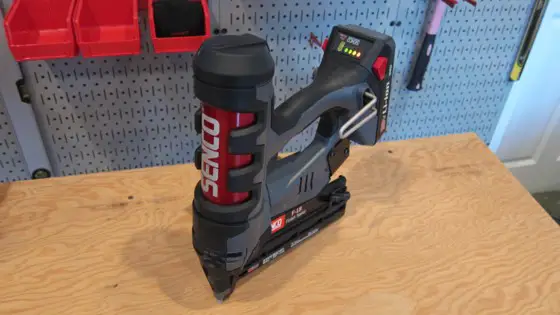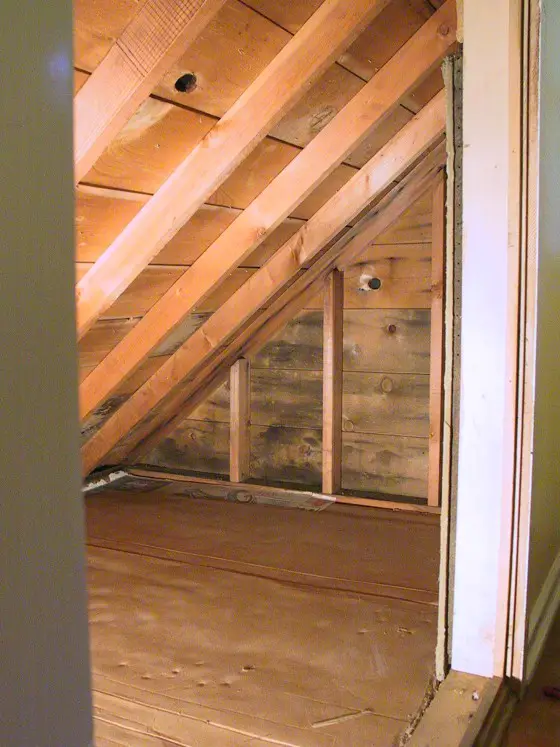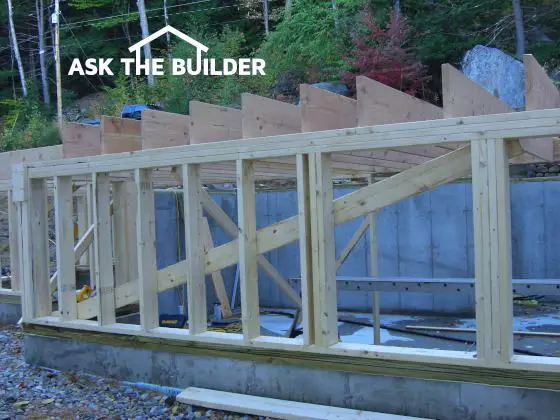
These floor joists are resting on an exterior bearing wall, while on the other end they sit in metal joist hangers nailed to a wood beam. Photo Credit: Tim Carter
DEAR TIM: This year I'm going to build a room addition because moving to a bigger home is just out of the question. I've never done rough framing for a subfloor and wonder all about the floor joists. I've got countless questions about them, and wonder if you can offer a quick tutorial on the top things one should know about selecting and installing wood floor joists. My guess is that you've handled quite a few and can shed some light on how I can have floors in my room addition that perform really well. Bob S., Rochester, NY
DEAR BOB: Something tells me that entire books have been written on the subject of floor joists. It's going to be impossible for me, in this tiny space, to give the topic the attention it truly deserves.
I think the best place to start is to understand that each floor joist is actually a beam in and of itself. A beam is a structural member that spans an opening and is supported at each end. When you place any number of these beams parallel with one another and then cover them with some other surface, you end up with a floor that you can walk on.
Any structural engineer will tell you that each specific beam, or floor joist, can only support a certain amount of weight based on its composition, size, its overall length between the points where each end rests, the spacing between each floor joist, etc.
It gets even more complex. There are scientific span tables that are referenced in the building code that tell you the minimum standards that the floor joist in your room addition must meet. These span tables tell you the maximum span a floor joist can achieve depending on the anticipated load on the joist.
Not all floor joist lumber has the same strength and even wood of the same species, but of a different grade, will have different strength characteristics. And you thought this was going to be easy.
Your building inspector will hopefully assist you in conjunction with the manager of your local lumber yard in picking the correct material for your job. Be aware that lumber yards have a far greater inventory of floor joists than the home centers or big box stores. Absolutely visit a real lumber yard to get some advice on strong and affordable floor joist lumber.
The common spacing between floor joists is 16 inches on center. Look inside old homes or warehouses and you'll often see funny cross bracing between the floor joists. This is often referred to as bridging. These pieces of lumber help to transfer the load of one joist to the joists on either side of it.
If you decide to install bridging, be sure the pieces don't touch one another. This can lead to floor squeaks as the bridging rubs against one another when someone walks above on the floor. The building code in your area may not require you to install bridging.
When you go to install a floor joist, you need to pay attention to its crown. Have you ever looked at large bridges from a distance? Almost every bridge has a hump in it with the center of the bridge being higher than the ends of the bridge. This is a crown. You need to make sure the hump in each floor joist is pointing to the sky.
Joists that have severe crowns need to be set aside or some of the crown needs to be trimmed off so the floor remains fairly flat once covered with plywood or oriented strand board. If you purchase engineered floor joists that resemble steel I-beams, these have no crown in them.
Floor joists are usually set on top of a special piece of lumber on top of a foundation. This plate needs to last a long time and isolate the floor joists from damage.
Wood destroying insects and wood fungi can destroy the wood in houses. The insects frequently start feasting on wood that's in direct contact with the masonry foundations. It's a building code requirement to use treated lumber where wood contacts masonry.
This treated lumber resists wood rot as it's immune to damage from moisture. Termites and carpenter ants find the chemicals in the wood none to tasty and often decide to find other more palatable wood. The first piece of lumber commonly attached to the top of a house foundation is often called a sill plate. This treated lumber is bolted to the foundation and the floor joists typically rest on it.
You can watch an informative video that shows a treated lumber sill plate and how it rests on a foundation. Just click here“sill plate video”.
Column 927
